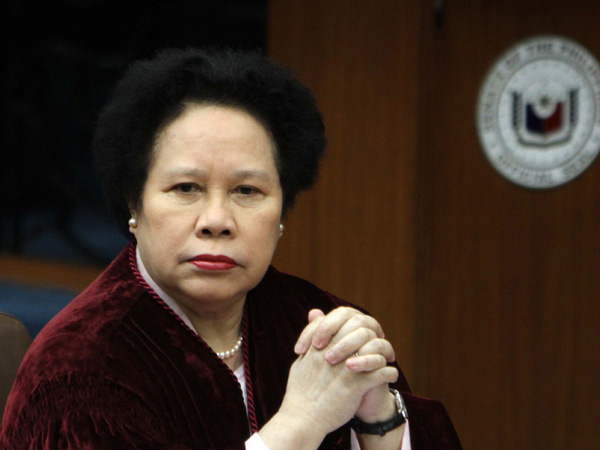By Stephanie Salazar
Philippine President Benigno Aquino III, in his fifth State of the Nation Address (SONA) last July 28, took 1.5 hours enumerating his administration’s accomplishments in disaster risk reduction and management, economy, infrastructure, national security, and social services, among many other fronts.
The glitz, glamour, and the Nancy Binay that went on at the Batasang Pambansa that day made Aquino’s speech appear like the sideshow, though.
As we all know, the annual Philippine SONA has evolved into a red carpet fashion event over the years. Public figures and their families take the opportunity to showcase Filipiniana garb at its finest (or at its worst, sometimes). Fashion designers get free publicity. Commentators have a field day flattering and trashing attendees’ fashion choices in classic E! Channel mode. And as we all know again, Senator Nancy Binay brought the soggy bacon home this year with her green gown (and the subsequent costume change to white terno). I must admit that although I find physical appearance-bashing the lowest form of humor, I did have a guilty good laugh at the memes the senator has inspired (suffice it to say that from now on, wearing a hot air balloon would be called doing a Nancy Binay). You’ve got to give it to Binay for being a good sport, though.
This meme was the best for me, and apparently Nancy thought so, too
The public attacks on our government officials, their wives, their sisters, and their dogs for promoting this sort of cultural practice are quite understandable. The SONA has become so ostentatious that Miriam Defensor-Santiago last year promised to file a resolution requiring lawmakers to wear an official SONA uniform instead to put an end to this insensitive, “thoughtless extravagance”.
It is interesting to note the stark contrast of how fashion as a political and cultural tool is used in western countries, like the United States, wherein opulent fashion is in fact a big no-no in the realm of politics as it supposedly reminds regular voters of what they don’t have and therefore alienates them. It seems the wisdom of this principle has escaped most of our politicians and their PR strategists.
Part of me, in attempting to be objective, tried to see if there is any good in this SONA fashion practice. I did realize that SONA-as-a-fashion-event appears to be the only widely publicized fete left that celebrates our national costume. Not even the equally highly-publicized entertainment events like the FAMAS Awards Night do this. I thought, too, that it is no one’s fault our national costume is so beautiful that it looks flamboyant, especially when seen in droves.
I also learned that the practice is not really unique to the Philippines; we share our inclination to lace political gatherings with pomp and pageantry with at least South Africa and China (although China has apparently ‘taken some cues’ this year).
Still, in the backdrop of corruption allegations against many government officials and the common knowledge that these gowns cost an arm and a leg, any effort to justify this SONA fashion sense would be a very long shot. Any such effort fails to mask the stench of callousness that marks this practice which hardly considers the plight of the common Filipino who could not spare P25,000 at the least for his or her own Randy Ortiz ensemble but has technically crowdfunded Binay’s Ortiz gown through taxes.
In an article on the Center for Sustainable Fashion website, fashion professor Dilys Williams argues that “fashion and politics have a long and multidimensional relationship, fashion’s political voice taking on a wide variety of guises inside and outside of the pillars of state.” Fashion indeed can express political statements and even national identity. But what political or cultural message are our politicians sending through their fashion decisions? Does it have anything to do with nation-building? Or are they merely saying I can buy you, your friends, and Randy Ortiz?
Through our own SONA fashion show, our national costume is sadly at risk of ceasing to symbolize and celebrate our national identity; it has somehow come to stand for the moral ineptness of our public officials and, partly, our national apathy towards that ineptness as well. I can only hope that one day, our government leaders would stop insulting the sensibilities of their constituents and reinstitute the glory, honor, and sense of culture that our terno ought to represent.












